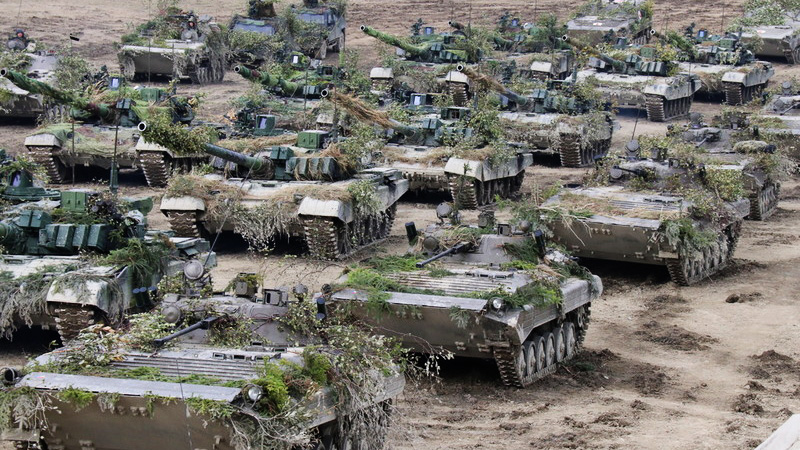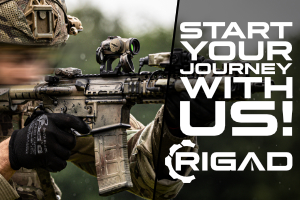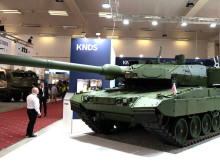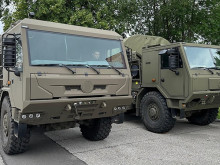Modernisation projects of the Czech Army must be accelerated. Only combat-capable armed forces will deter a potential adversary
The ongoing war in Ukraine, which no one wanted and many could not imagine two weeks ago, is fundamentally changing and will change the view of some Western governments on their armed forces. If we now allow ourselves to completely disregard the human dimension of the tragic events, the shared desire to end them and the principles of Russia's aggressive policy, which are unacceptable in the civilised world, the current war will also bring further valuable insights and experiences concerning the possibilities of modern technologies and how they can be used. And, in a broader perspective, not only in comparison with the questionable performance of the Russian Army and the apparently very good performance of the Ukrainian Army, also a new benchmark for the capabilities of the armies of NATO countries. The modernisation of the Army must become a priority not only in words.
 Picture: In the light of the Russian invasion of Ukraine, the quality, size and level of the Czech army's weaponry is crucial. (illustration photo) | Ministry of Defence of the Czech Republic
Picture: In the light of the Russian invasion of Ukraine, the quality, size and level of the Czech army's weaponry is crucial. (illustration photo) | Ministry of Defence of the Czech Republic
In the first week of its aggression against Ukraine, the Russian armed forces have in many respects brought a good deal of shame on themselves. Their inability to deal effectively with the well-organised and well-armed Ukrainian air defence is obvious. Their logistical problems are also obvious. Both of these are probably largely due to their original intention that the war would end very quickly and that the Ukrainians would not actually resist. The unjust war that Russia is waging against a culturally close nation is also reflected in the morale of the troops, especially the line units, which are formed largely by conscripts. However, the situation may evolve and despite optimism and hope, the conflict may end badly, with Ukraine's defeat. This will then be very difficult to correct without internal changes in Russia.
However, the need to have ready armed forces is quite obvious, because only their ability and willingness to put up effective resistance means that Ukraine still exists and that there is a real possibility for a diplomatic solution. Without motivated, numerous and courageous soldiers and without sufficient modern equipment, a quick end would follow.
This brings us to the issue of the state of the armed forces of the Western and Alliance states. We are not intervening militarily because Ukraine is not a member of NATO and there are no formal allied commitments. However, we already do have these towards the Baltic States or, for example, Romania (which has lost one fighter aircraft over the sea and we do not yet know what the cause was) or Turkey (which has closed the Bosphorus and the Dardanelles to Russian warships). And closer relations have also been established with neutral Finland or Sweden, which the Putin regime is threatening with the fate of Ukraine if they try to join NATO. In the event of Russian success in Ukraine, we can expect that the ex-Soviet republics will be the subject of further interest for the expanding Russian regime, and this will already concern us very intensely. Formally through Article 5 of the North Atlantic Treaty, and informally by the simple fact that the ex-Soviet countries will be followed by the former Eastern bloc countries in Putin's sickly, even irrational strategy.
The draft Czech state budget was conceived before the Russian attack began. Referring to the impossibility of paying back the CZK 4.8 billion for the tracked IFVs this year because no supplier has been chosen and because no contract has been signed, and because of the desired savings and the desire to reduce the deficit, the defence is to lose CZK 5.4 billion. According to former defence minister Lubomir Metnar, the relative reduction of the defence budget from 1.4% to 1.3% of GDP is an inappropriate political signal towards allies in the current situation. On Wednesday, 2 March, the Government increased the budget again by one billion, saying that it would use the funds to buy small arms under framework contracts. The opposition will propose that the entire original amount be returned to the MoD budget. Objectively viewed, even this may not be enough. Attacking Ukraine, Karel Krejza, a member of the Defence Committee and a government MP, wrote: "In view of the current situation, I would immediately reconsider the goals of the Green Deal, I really don't want to be dependent on Putin's gas. Also, it is clearer than the sun that we really need to modernize the army and strengthen its numbers. How much is that going to cost? Honestly that's probably not the most important question right now. I estimate it at plus 20 billion a year."
Looking across the border, the complexity of the Czech approach, mainly due to the overcomplicated conditions under the current public procurement law, is glaring. Where the Minister of Defence, Jana Černochová, and the MoD apparatus are intricately tracking down projects in which to invest one or several billion crowns, Poland is coming up with the information that it will buy 250 US tanks for six billion dollars, and Germany is leapfrogging its armed forces budget by one hundred billion euros, and very quickly achieving and maintaining defence spending at a level of at least 2% of GDP, which is therefore a big and in our terms almost unimaginable boost in absolute terms given the performance of the German economy. And yet apparently without any fear that it will not be possible to invest it effectively.
If the Czech Republic wants to be a valid ally in a dramatically worsened international security situation, it must remedy this state of affairs as quickly as possible. The government has an amendment to the Public Procurement Act in its programme statement. There is also a commitment to update strategic documents, including the 2019 Concept of the Build-up of the Army of the Czech Republic 2030. Evaluate in today's situation which goals can be accelerated and implement them - in a newly set legal environment that will allow for efficiency in addition to transparency. The course of the tender for tracked IFVs is a deterrent example in this respect. The Heavy Brigade was supposed to have the vehicles available from 2020.
There are already framework contracts with suppliers of not only small arms. In addition, there is equipment and technology that our domestic defence industry can produce, and its capacities also allow for a substantial increase in orders. The generally expected pressure on the capacity of the European defence industry as a result of Russian aggression and potential future threats may significantly affect some very important acquisition projects. States are suddenly realising that they have long underestimated the defence and the state of their armed forces in a sense of relative security resulting from seemingly rational relations. And the priority of contractors will naturally be primarily domestic militaries - this can apply to tracked IFV's, tanks, or supersonic fighter aircraft for example, making it all the more important to streamline our acquisition process.
For military equipment produced in the Czech Republic, the situation will always be more favourable and it will be appropriate to take advantage of this and continue to use it. For example, sixty TITUS vehicles have been ordered in the first phase. But the Army knows how to use them and needs hundreds. They will undoubtedly contribute to strengthening its capabilities. Similarly, a glance at Annex 4 of the 2030 Concept offers a glimpse of the hastened rearmament of the 44th Mechanised Battalion with Pandur II wheeled Infantry Fighting Vehicles, which in quiet times was scheduled for 2027-2030. The combat value of the IVECO light armoured vehicles now used by the battalion is negligible. It is proposed to accelerate the acquisition of self-propelled mortars. There is the very topical issue of air defence assets for direct support to manoeuvring units. Carrying RBS-70 on the back of Tatras is, at first sight, an emergency solution. There is talk of reintroducing MLRS systems. The same emergency solution is also the Tatra 815-7 PRAM vehicle, which is designed to carry the vz. 82 mortar.
And we have also repeatedly written about the need to restore the means of army logistics. We are watching live the difficult movement of Russian convoys, which provide ideal targets for air force, unmanned aerial vehicles, artillery and rocket launchers. They cannot be wished success and it is good that they are facing problems - but lessons can be learned. The technical problems of the vehicles are partly to blame, clogging up the roads and causing delays and putting others at risk. Support assets need to be refreshed and kept up to date, just like first-line weapon systems, which cannot function without support.
At a time of a protracted covid pandemic, Czech society has been largely and increasingly at a loss, and few see the economic consequences of the measures as inevitable. The response to the Ukrainian crisis has been quite different. Support for Ukraine, against which Russia, led by Putin, is waging an unprovoked war of aggression, is a matter of course and few question it, and we are prepared to bear the costs of this support. This includes the costs invested in the combat capability of our own armed forces. The demand for technology and equipment in Europe will grow, its prices will rise, and the Czech Republic should not fall asleep. Let us support the development of the Czech Army's capabilities - only a convincingly combat-ready army can fulfil its most important role. To deter a potential adversary. And the latter, especially after the Ukrainian lesson, will certainly want to pay very close attention to where it is treading.





















